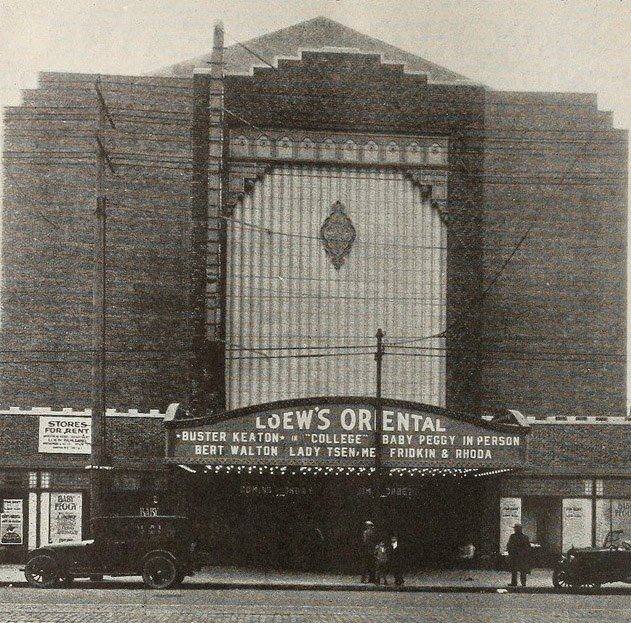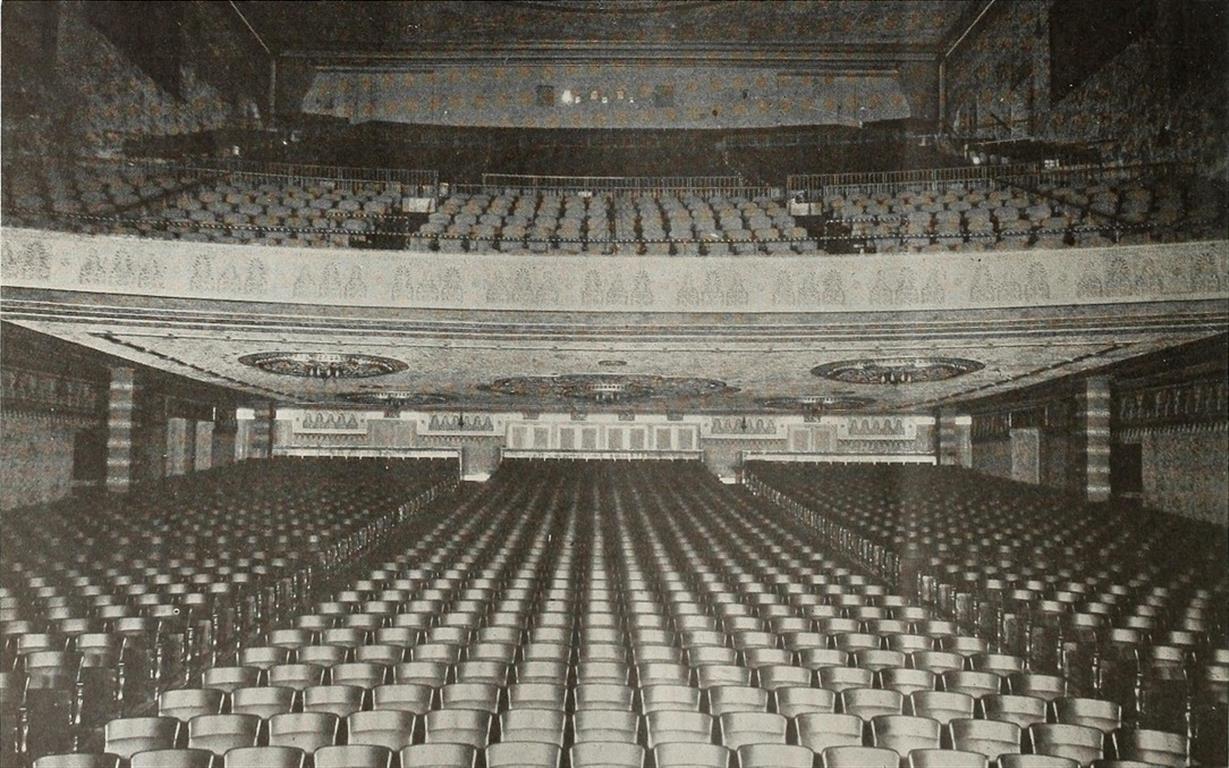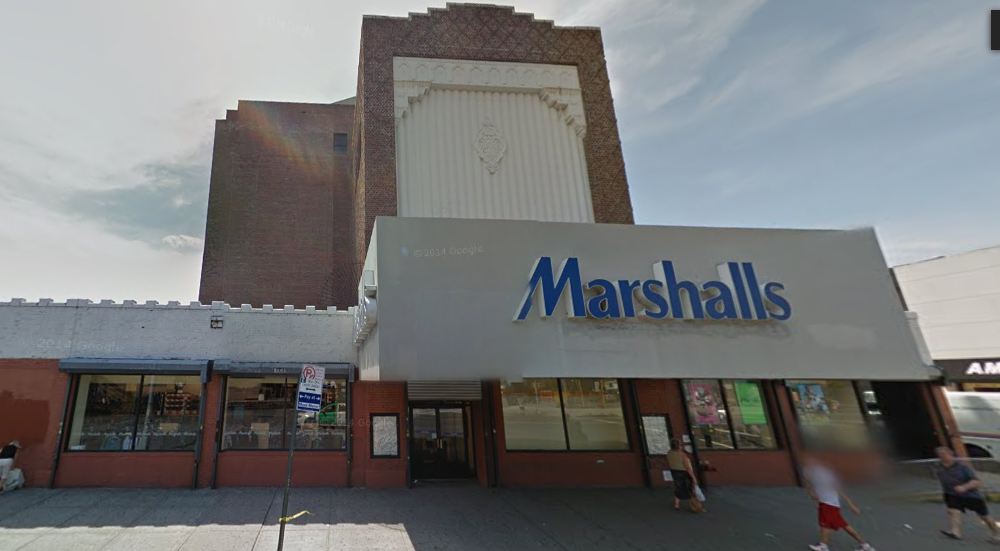Rare Footage Of Loew’s Oriental Allows You To Explore The Lost 86th Street Theatre [Video]
![Rare Footage Of Loew’s Oriental Allows You To Explore The Lost 86th Street Theatre [Video]](/content/images/size/w1200/wp-content/uploads/2016/05/Screen-Shot-2016-05-02-at-4.48.17-PM.png)
For much of the early 20th Century, opulent movie theaters dotted the borough of Brooklyn. We see can their ghosts every day on the streets, as we walk under the marquees and past ornate facades. These intricately carved relics of a different time can be found attached to the well-preserved Loew’s Valencia movie palace in Queens and Flatbush’s Loew’s Kings Theatre — which was recently painstakingly restored to its former glory.
However, few know that we once had such a architectural gem right here in Bensonhurst. Loew’s Oriental Theatre, which opened at 1832 86th Street in 1928 and closed in 1995, now houses a Marshalls department store.
I moved to Bensonhurst as a 10-year-old girl, and the old Loew’s Oriental building had always captured my imagination. Large and imposing, it did not seem as if anything else was going on on the upper floors, and the utilitarian blandness that is common to nearly every Marshalls in existence also suggested at something hidden — something greater. Finally, almost a decade and a half later, I decided to investigate this building — anything that unique and that imposing had to have been pretty cool. I did realize that it was a movie theater; however, nothing could have prepared me for just how much beauty had once been there — and how much mystery would still remain.
Loew’s theaters were all created with a unique theme in mind, and a great deal of thought went into the construction of each one. The Loew’s Valencia and Loew’s Kings were two of the stunning Wonder Theatres, as they were sometimes called. With a capacity of just under 2800, the Loew’s Oriental was not as large as any of the Wonder Theaters that are now carefully cared for by conservationists, but it was still nothing to sneeze at. When the theater first opened, it had featured opulent Middle Eastern inspired design motifs and imagery.

Photographs of the interior from around 1970s and 1980s show it with a brightly painted exterior, where it is now a drab white – back then it was also red, and blue, and yellow. The only clear shots I could find of the interior were the black and white photos from when it first opened, but only one look at the lush potted plants and plush couches, and the elaborate mosaics on the walls sends one’s imagination spinning. Just how colorful was it? Did the interior match the colors on the exterior? What was it like?
Desperately, I searched for more photos, more information, more anything about the Loew’s Oriental, and found a goldmine in the comments section of Cinema Treasures. While internet comments are rarely fully reliable sources of information, I did find a couple fascinating anecdotes about the Oriental. Most commenters remember it as being the most beautiful movie theater in the area, echoing mentions of the stunning tile floors, a marble staircase to the balcony floor, grandiose arches and domed ceilings, and elaborate decor in a “Moorish” motif. One commenter even claimed that there had been a sculpted dragon in the ceiling!
The Oriental opened a month after the death of Marcus Loew, the founder of the Loew’s brand and visionary behind the exotic and elaborate Wonder Theaters. Several of the comments on the same thread noted that the Oriental once housed a memorial plaque (8) in his honor, which has now been moved to the Loew’s located in Lincoln Square. Loew had died without seeing the Oriental, or any of the Wonder Theaters finished, which is quite a pity because all of them were unique architectural masterpieces.

It is also known that the Loew’s Oriental had at one point been home to an organ, as there are records of one; it had been a Robert Morton three manual, 13 rank organ. There are also stories of a grand piano being located in the lobby of the theatre when it had first opened, but that one unfortunately cannot be confirmed.
I’d spent a few hours looking, until finally, I found it — a video of the Loew’s Oriental (above). Taken on the night it closed, it was everything a video taken with a handheld camera in 1995 would be — grainy, shaky, and definitely not Instagrammable. But after a couple hours of staring at the same ten black and white photos, it was like a burst of color and life. The ceilings were unimaginably high; Middle Eastern style archways rose up from the side walls and into the ceiling. Research on other Loew’s “atmosphere” theaters suggests that ceilings in these movie palaces were often painted to look like a night sky, and would have stars projected on them to create a feeling of being outdoors, in a beautiful exotic locale. Just looking at the shots of the theater’s interior, it isn’t hard to imagine sitting in one of those large seats and looking up at a twinkling night sky. Stunning tile work and unique murals also make an appearance in this video. There were also closeup shots of the stage and screen — which is designed to look like a window to another world.
It’s not certain just how much of the theater interior remains; it’s quite obvious that the Marshalls retail space does not take up the entire first floor of the theater, but without having worked there, I can’t say for sure how much of the space is also used for storage or employee needs. Some comments on Cinema Treasures suggest that all you have to do to get into the balcony area is to ask to use the bathroom and then sneak upstairs; which explains why the employees will now tell you to go down the block if you ask them for a bathroom. We do know that the orchestra level is completely gutted, as is the lobby and anything that was downstairs. At least some of the upstairs balcony remains unused, though it’s impossible to tell how much of it is preserved, and what state of (dis)repair it may be in.

It is a great tragedy that the unique Loew’s Oriental is no longer a part of our neighborhood; and it is a greater tragedy that we do not have a dragon looking down on us while we shop. Though there has recently been a push to preserve the interiors of many old historical buildings, the Oriental missed out on that by a couple of decades. It is a great loss to our neighborhood, but we can only hope that in the future whatever may be left will be salvaged.
Did you ever visit Loew’s Oriental in its heyday? Share your memories of this lost landmark in our comments section.



